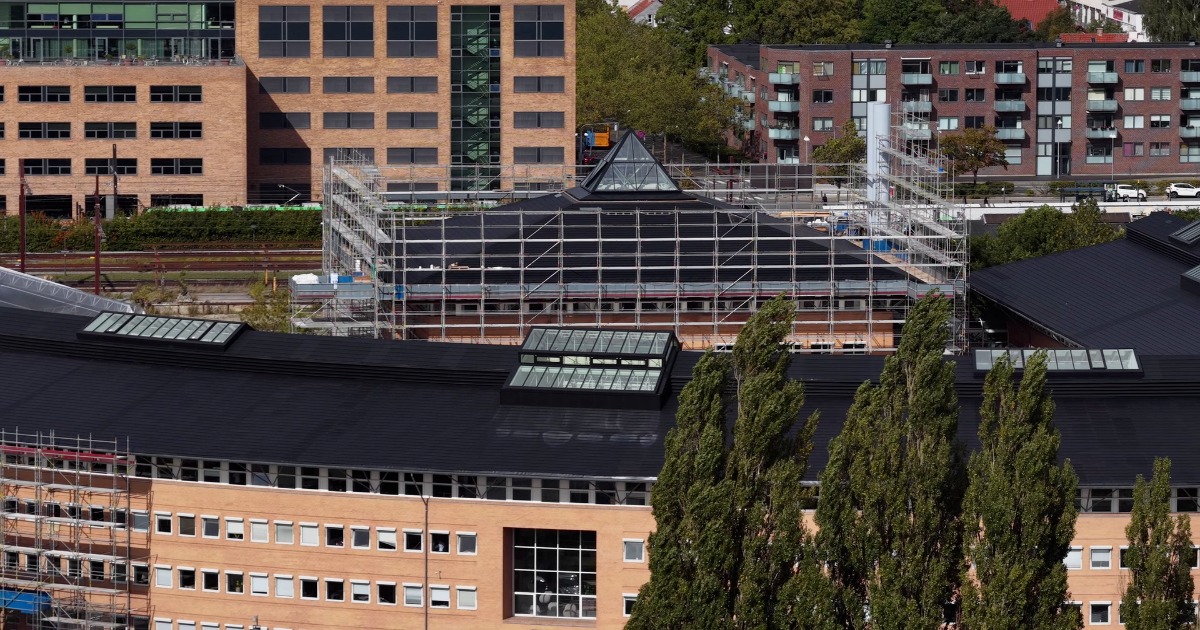BIPV in Practice: How Our Custom Modules Were Used to Create Denmark’s Largest Integrated Solar Roof

In Glostrup, just outside Copenhagen, a major milestone for building-integrated solar technology has taken shape. A 7,500 kv.m. solar roof has been completed across the Stationsparken commercial building complex — and the modules used were designed and manufactured here in Lithuania, at Metsolar’s facility in Alytus.
Unlike traditional PV systems that are mounted on top of a roof, this project integrates the solar modules directly into the roofing structure. The modules are the roof. This approach, known as BIPV (Building Integrated Photovoltaics), makes it possible to generate clean energy without altering the architectural character of the building.
From Concept to Roof: Collaboration and Custom Engineering
The project was developed and installed by SolarTag, while the investment came from the CapMan Nordic Real Estate III Fund.
Our role was to engineer and manufacture custom PV modules that visually align with the existing roofing material. That meant matching:
- Color tone
- Surface texture
- Tile layout rhythm
- Dimensional fit
The result: a solar roof that looks like a natural part of the building, not an added layer.
The system is expected to generate approximately 589,000 kWh of electricity per year, covering a significant share of the complex’s energy needs.
Why Integrated Solar is Becoming the New Normal
In many European cities, architectural integrity is more than aesthetics — it’s regulated. Dark, reflective, or contrasting solar panels can be restricted in sensitive urban areas.
BIPV solves this challenge by combining energy production with architectural harmony.
“A solar roof doesn’t need to look like solar panels. It can simply look like a roof.
That’s the idea behind BIPV — energy generation that blends into the architecture rather than sitting on top of it.”
— Justas Jaruševičius, Commercial Director at Metsolar
This is especially relevant as more municipalities adopt sustainability targets and as building owners seek low-carbon strategies without compromising design.
Where BIPV Demand Is Rising Fastest
Across Europe, the demand for integrated solar solutions is growing rapidly. Among the strongest markets today is Switzerland, where both aesthetic quality and energy performance are treated as essential building values, not trade-offs.
We are also seeing increasing adoption in:
- Denmark
- Germany
- The Netherlands
- Belgium
- Austria
Each market has its own architectural traditions — which makes customization not just a feature, but a necessity.
Built in Lithuania, Installed Across Europe
At our Alytus facility, we specialize in non-standard, project-specific PV modules for roofs and façades. Every module is engineered to match the design intent of the building it belongs to.
We manufacture up to 50,000 m² of customized BIPV modules per year, supplying architects, developers, EPCs, and façade system integrators throughout Europe.
“This project is a reminder that advanced architectural solar solutions do not need to come from abroad.
The engineering talent and manufacturing capability we have here in Lithuania allows us to contribute to some of the most demanding projects in Europe.”
— Justas Jaruševičius